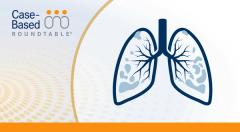
CheckMate 9LA Outcomes Stand Out in PD-L1 Negative and Squamous NSCLC
Julie Brahmer, MD, discusses the unique features of the phase 3 CheckMate 9LA trial in patients with metastatic non–small cell lung cancer.
Episodes in this series

Julie Brahmer, MD, director of the Thoracic Oncology Program and professor of oncology at the Sidney Kimmel Comprehensive Cancer Center at Johns Hopkins Medicine, discusses the unique features of the phase 3 CheckMate 9LA trial (NCT03215706) in patients with metastatic non–small cell lung cancer (NSCLC).
The CheckMate 9LA trial enrolled patients to receive ipilimumab (Yervoy), nivolumab (Opdivo) and 2 cycles of chemotherapy compared with 4 cycles of chemotherapy in the control arm. The immunotherapy (IO)-containing arm demonstrated survival benefit vs chemotherapy in the intent-to-treat population. Notably, it showed benefit in the patients with negative PD-L1 expression, who respond poorly to chemotherapy, and benefited those with squamous histology more than in those with nonsquamous histology.
Brahmer also notes that the disease was controlled for a longer duration in those with PD-L1–negative disease. Although not all patients need combination therapy, she says this regimen stands out vs other chemotherapy plus IO regimens, particularly in the areas of PD-L1 negative and squamous histology.
TRANSCRIPTION
0:10 | This study was quite interesting in the fact that this was the only study that used just 2 cycles of chemotherapy in the experimental arm with nivolumab and ipilimumab. This IO/IO regimen is given continuously with nivolumab, every 3 weeks with ipilimumab every 6 weeks for up to 2 years for the immunotherapy. So it is a truncated regimen for chemotherapy, which a lot of patients and a lot of physicians do like, but it is continuing the IO/IO combination for a long period of time, and I think that this is one regimen that across the intention-to-treat population has shown significant survival advantage compared to chemotherapy.
1:10 | Now this combination is not compared to directly head-to-head to single-agent IO with chemotherapy, which would be interesting to see, and probably some of the greatest benefits we're seeing with this regimen is in patients with PD-L1–negative disease, where chemotherapy's overall survival is pretty low. In the combination with chemotherapy, the median overall survival is at least a year and a half. There [are] interesting data; while patients with nonsquamous histology did do well, and do tend to do better than those patients with squamous cell histology overall—but in this study, those patients with squamous cell histology had an HR of 0.64 when they received nivolumab/ipilimumab plus chemotherapy compared with chemotherapy, whereas those patients with nonsquamous cell histology, the HR for overall survival was 0.8.
2:20 | I think that also interestingly, in those patients with PD-L1–negative disease, their disease was controlled much longer, even seemingly longer than those patients with PD-L1 positivity but I think that these analyses certainly are helpful. While I don't think everyone needs to receive the combination of IO regimen plus chemotherapy, but certainly in our patients with PD-L1–negative disease, this is one of the areas of greatest unmet need. These combinations do seem to stand out compared to regimen such as the KEYNOTE 407 [NCT02775435] where the data in squamous and PD-L1–negative [disease] is just not that great.
















































